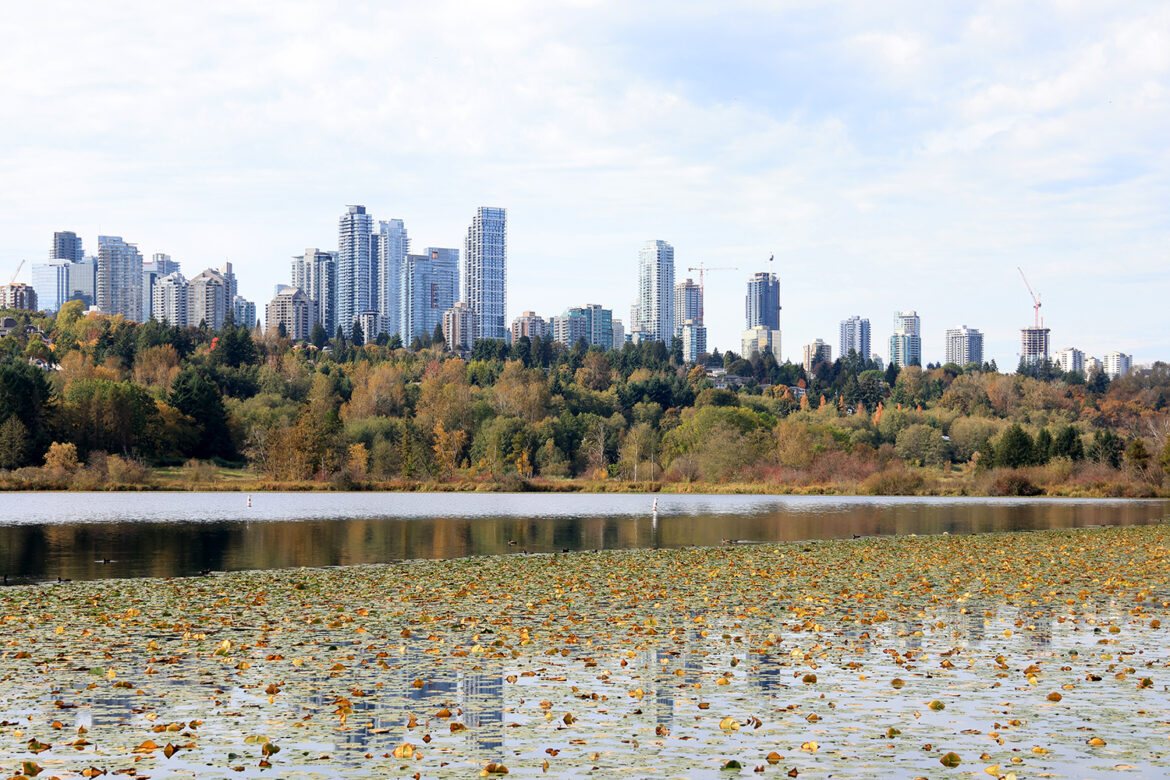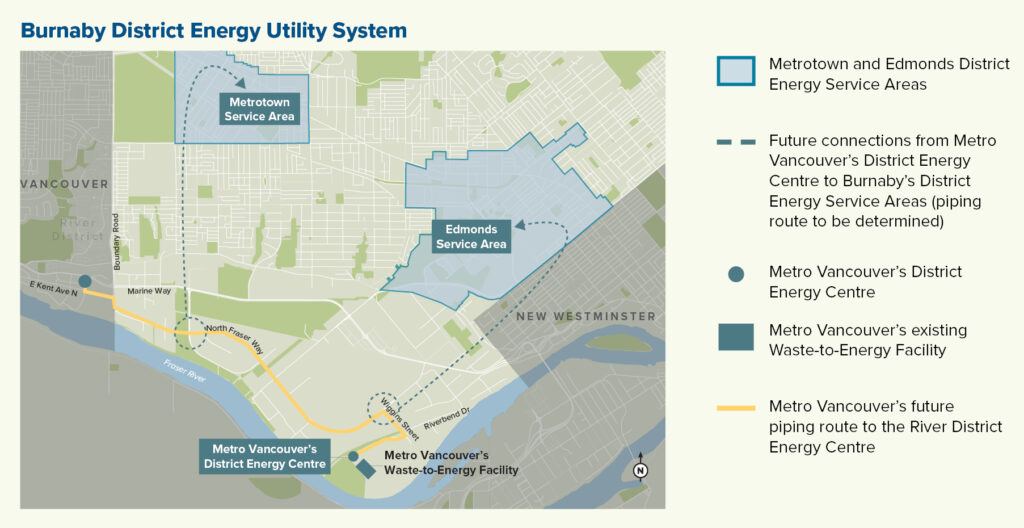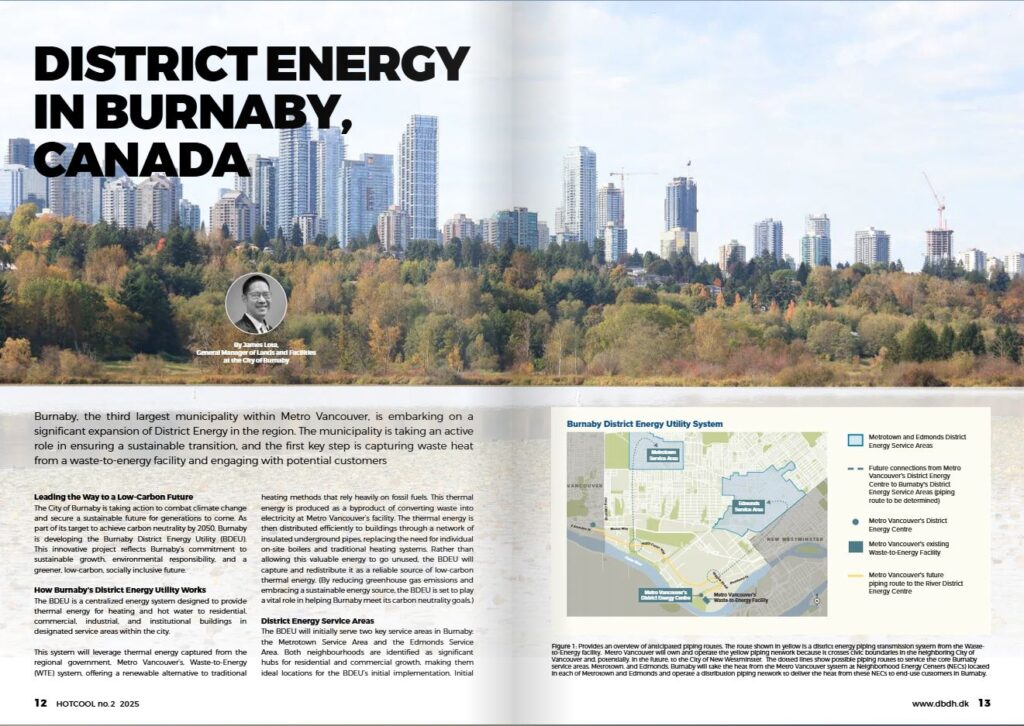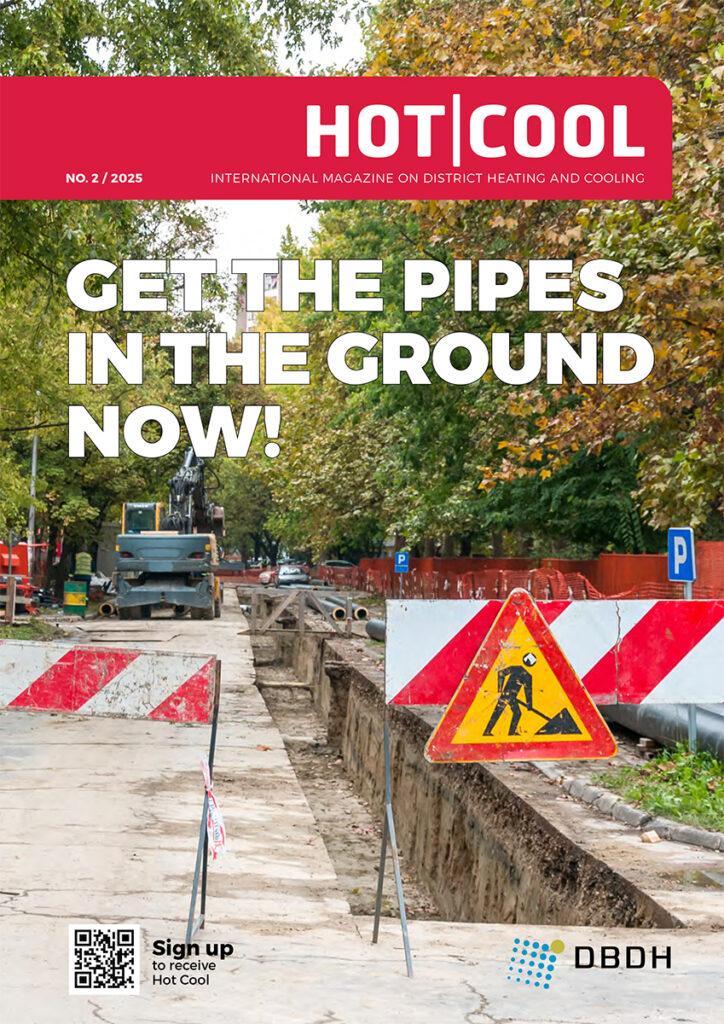Burnaby, the third largest municipality within Metro Vancouver, is embarking on a significant expansion of District Energy in the region. The municipality is taking an active role in ensuring a sustainable transition, and the first key step is capturing waste heat from a waste-to-energy facility and engaging with potential customers.
By James Lota, General Manager of Lands and Facilities at the City of Burnaby
Published in Hot Cool, edition no. 2/2025 | ISSN 0904 9681 |
Leading the Way to a Low-Carbon Future
The City of Burnaby is taking action to combat climate change and secure a sustainable future for generations to come. As part of its target to achieve carbon neutrality by 2050, Burnaby is developing the Burnaby District Energy Utility (BDEU). This innovative project reflects Burnaby’s commitment to sustainable growth, environmental responsibility, and a greener, low-carbon, socially inclusive future.
How Burnaby’s District Energy Utility Works
The BDEU is a centralized energy system designed to provide thermal energy for heating and hot water to residential, commercial, industrial, and institutional buildings in designated service areas within the city.
This system will leverage thermal energy captured from the regional government, Metro Vancouver’s, Waste-to-Energy (WTE) system, offering a renewable alternative to traditional heating methods that rely heavily on fossil fuels. This thermal energy is produced as a byproduct of converting waste into electricity at Metro Vancouver’s facility. The thermal energy is then distributed efficiently to buildings through a network of insulated underground pipes, replacing the need for individual on-site boilers and traditional heating systems. Rather than allowing this valuable energy to go unused, the BDEU will capture and redistribute it as a reliable source of low-carbon thermal energy. (By reducing greenhouse gas emissions and embracing a sustainable energy source, the BDEU is set to play a vital role in helping Burnaby meet its carbon neutrality goals.)
District Energy Service Areas
The BDEU will initially serve two key service areas in Burnaby: the Metrotown Service Area and the Edmonds Service Area. Both neighbourhoods are identified as significant hubs for residential and commercial growth, making them ideal locations for the BDEU’s initial implementation. Initial expansion will begin within the Metrotown area. Connections to the BDEU in these service areas became mandatory in early 2024, signalling the City’s commitment to greenhouse gas reduction.
The system will connect to Metro Vancouver’s WTE facility and a centralised District Energy Centre, forming a robust, Burnaby-wide thermal energy network.
Figure 1: Provides an overview of anticipated piping routes. The route shown in yellow is a piping transmission system from the Waste-to-Energy facility. Metro Vancouver will own and operate the yellow piping network because it crosses civic boundaries in the neighboring City of Vancouver and, potentially, in the future, to the City of New Westminster. The dotted lines show possible piping routes to service the core Burnaby service areas, Metrotown, and Edmonds. Burnaby will take the heat from the Metro Vancouver system at Neighborhood Energy Centers (NECs) located in each of Metrotown and Edmonds and operate a distribution piping network to deliver the heat from these NECs to end-use customers in Burnaby.
The Value of Intergovernmental Collaboration
The Burnaby District Energy Utility demonstrates the value and the importance of collaboration between a local government, the City of Burnaby, and a regional government, Metro Vancouver. Through a shared commitment to innovation and sustainability, the two governments have established a partnership that increases the value of Metro Vancouver’s Waste-to-Energy Facility.
“This project is a prime example of how collaboration can drive innovation,” said Burnaby Mayor Mike Hurley. “By working with Metro Vancouver, we are able to transform waste into a valuable energy resource, reducing emissions and supporting a cleaner future for our community.”
Metro Vancouver’s Waste-to-Energy Facility processes approximately 25% of the region’s solid waste, combusting it to generate electricity—about 20 megawatts, which is enough to power 16,000 homes.
“The energy recovery potential of this facility is enormous ,” said Hurley. “By tripling the energy recovery through the district energy project, we are demonstrating how existing infrastructure can be enhanced to deliver meaningful environmental and economic benefits.”
This collaborative effort is a powerful example of how intergovernmental partnerships can leverage existing infrastructure to achieve environmental and economic benefits.
Benefits of the Burnaby District Energy Utility
The BDEU will offer a wide range of benefits to the city, its residents, and the environment.
Reduce the City’s Carbon Footprint
Transitioning to renewable thermal energy will significantly lower greenhouse gas emissions. Buildings currently account for 39% of Burnaby’s total greenhouse gas emissions, with most of this coming from traditional heating methods.
Enhance Energy Efficiency
Centralized district energy systems are inherently more efficient than traditional individual heating systems. By generating and distributing thermal energy from a central source, the BDEU will reduce energy losses and ensure that buildings receive heat more effectively.
Adapt to Future Energy Sources
The BDEU is designed to evolve alongside new technologies and energy sources. As low-carbon energy solutions continue to advance, the BDEU can integrate these innovations to remain a sustainable and efficient energy system for years to come.
Keep Costs Fair and Competitive
As a public utility, the BDEU’s rate structure will be determined by the City of Burnaby. This approach ensures transparency, affordability, and fairness for all users.
Operations
The Burnaby District Energy Utility will initially be operated as an internal division of the City, with the prospect of establishing a local government corporation at a later date. This structure provides flexibility and transparency as elected local government officials will oversee operations and rate setting.
Raising awareness
District Energy systems are a growing presence in the Metro Vancouver area, including on university campuses (University of British Columbia, Simon Fraser University – Burnaby campus), and in the cities of Vancouver, Richmond and North Vancouver. With this project, public awareness of district energy is also increasing. However, significant potential remains for additional, more expansive projects in the region. When fully built out, the Burnaby District Energy Utility will be the largest system in the region.
Planning and timeline
Burnaby City Council approved a Burnaby District Energy policy, effective January 2024, which sets out requirements for mandatory connections of new multi-family developments of a certain size in the core service areas of Metrotown and Edmonds. The policy also establishes boundaries for district energy-ready and voluntary connection areas, within which the Burnaby District Energy Utility plans to expand in the future. Construction in the core areas is expected to start soon, with initial connections anticipated within five years.
Why District Energy Matters for Burnaby
Burnaby is growing rapidly, and the demand for energy continues to rise. Traditional heating methods, which depend on natural gas and other fossil fuels, contribute significantly to greenhouse gas emissions and environmental degradation. District Energy provides a practical, sustainable alternative that aligns with Burnaby’s long-term environmental goals.
The benefits of district energy extend beyond emissions reductions. By centralizing energy production, the BDEU simplifies infrastructure needs, reduces maintenance costs, and enhances energy security. As other front-runner cities in around the world, Metro Vancouver is adopting district energy systems as a proven solution for achieving sustainability targets.
Committed to sustainability
The implementation of the BDEU is the result of dedicated efforts to become more sustainable. Burnaby is excited to participate in the International Energy Agency Technology Collaboration Programme on District Heating and Cooling (IEA-DHC) sustainable business model research project as it supports Burnaby to embed considerations of sustainability, including social sustainability, into all aspects of its development. The learnings from this study will be valuable in shaping the success of district heating in Burnaby.
Looking Ahead
The Burnaby District Energy Utility is just the beginning of Burnaby’s larger vision for sustainability. As the city expands its district energy network, it will continue to explore new opportunities for renewable energy integration and emissions reduction. With the flexibility to adapt to emerging technologies and increase the integration of heat and power, the BDEU represents a future-proof solution for a changing energy landscape.
________________________________________
Quick Fact:
Buildings currently account for 39% of Burnaby’s total greenhouse gas emissions, mostly from heating. The BDEU will replace traditional heating methods within the service areas with a clean, renewable alternative.
James Lota
James Lota is a seasoned professional engineer with over 20 years of project management experience in high tech manufacturing and alternative energy projects. Today, he serves as the General Manager of Lands and Facilities at the City of Burnaby, where he oversees the city’s real estate assets and civic facility operations.
For further information, please contact: james.lota@burnaby.ca
“District Energy in Burnaby, Canada” was published in Hot Cool, edition no. 2/2025. You can download the article here:
Did you find this article useful?
Subscribe to the HOT|COOL newsletters for free and get insightful articles on a variety of topics delivered to your inbox twice a month!



